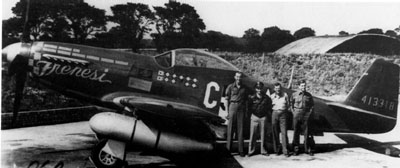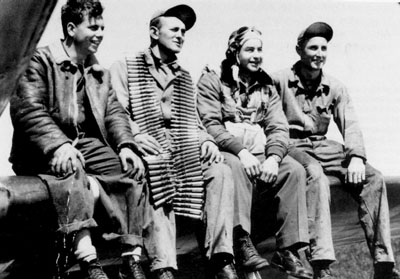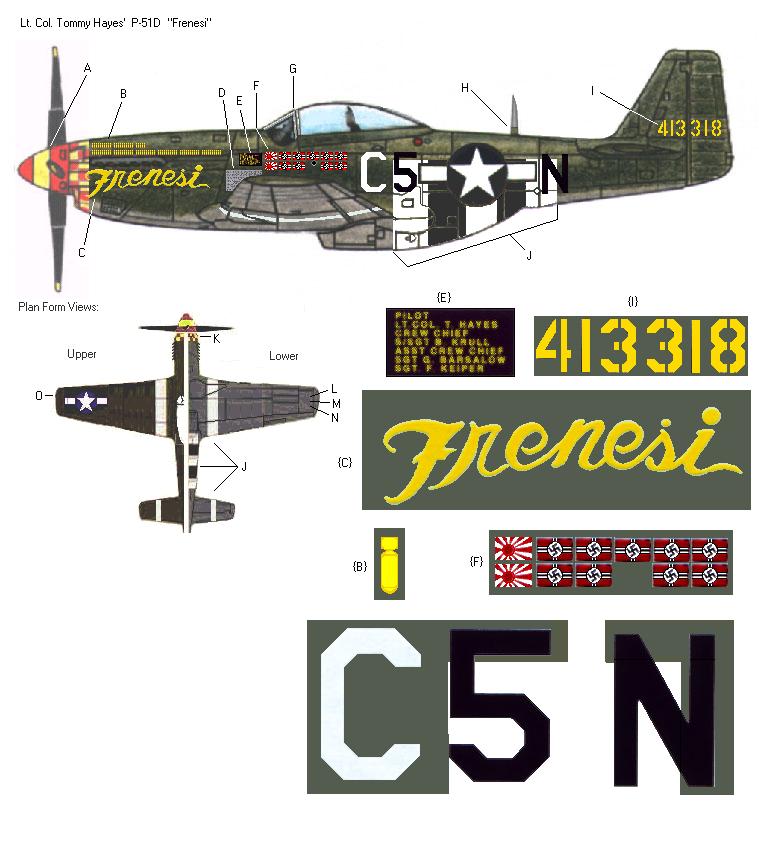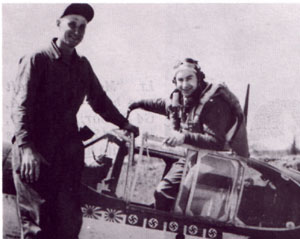357th FG Profile

Major Tommy Hayes here with crew, Gene Barsalou, Harry Anderson and Robert Krull. Tom had 10 1/2 victories, 2 from the Pacific Theater. “Frenesi” was named after a popular song “Free and Easy”.

“Frenesi” with crew, Bob Krull, Tom Hayes, Gene Barsalou, and Fred Keiper
 Autumn /-Fall 1944
Autumn /-Fall 1944
Modeler Tips:
Side View Notes:
A. Rear red band on propeller boss extends onto spinner to leading edge of blades when in neutral pitch. Determine width of yellow band by dividing remainder of spinner evenly.
B. 85 bomb-style mission marks in eight blocks of ten and one block of five. Note spacing between the blocks, six along upper cowl seam with two and a half above. Space between first block and checkers equal to spacing between each block of marks.
C. “Frenesi” in USAAF yellow splashed across both strip panels beneath exhaust on port side, serifs on the letter “F” overlap rear row of checkers slightly- ends of the word overlap panel seams and extend down to lower portion of nose.
D. USAAC Project Number in black over natural metal.
E. Plate for Pilot and crew names descend from left in yellow over black.
F. 11 kills, single column of two Japanese battle flags followed by nine Reich Flags in four columns of two plus a single one above opening for signal pistol tube. Tommy Hayes was a member of a very small fraternity of pilots who cut their combat teeth in the Pacific Theater flying P-40’s- and he brought two confirmed victories over Japanese aircraft with him to Leiston.
G. Canopy framing above sills left natural aluminum.
H. Antenna post had bottom 8″ painted dark olive green, remainder natural metal. There were no antenna wires installed on this aircraft.
I. Tail Number- “413” on fin, “318” on rudder in yellow.
I. Sides of radiator ventilation flap were natural metal.
J. Reduced invasion stripes come up to within a couple inches of uppermost panel seam. Note that the black fuselage code letters overlap the camouflage.
Upper & Lower View Notes:
J. White recognition stripes, both upper and lower, were of standard widths on wings & stabilizers for mid-1944 ETO Mustangs.
K: Width of checker reduced on underside in order to fit evenly on the narrow surfaces of the chin scoop area.
L, M, N. Red, Green, Yellow navigation lights- circular and flush with wing panel.
O. Formation Lights- Red (Port) and Green (Starboard)
Overall Modeling Tips:
*This aircraft wore Dark Olive Green camouflage over USAAC Medium Gray. Note area of natural metal reserved for project number. Paint on the flat colors first (recognition stripes, camouflage areas) then mask off and paint a rectangle color for the project number, and the canopy framing indicated, in a natural aluminum color. Most metal colors will be marred or removed by masking materials so it’s often better to leave them for last.
*After building several 357th A/C over the past 30 years, I recommend painting the nose area forward of the exhaust cutout yellow when the flat features are painted. Carefully cut away the yellow squares from the checkerboard decal and apply the remaining strip of red checkers to the nose. This method significantly reduces the potential for bubbles and wrinkles, plus it makes exact alignment of the decal easier.
*Prior to assembly, wash clear plastic parts with a mild glass cleaner and gently wipe dry. Then use a Q-Tip to evenly spread clear liquid floor wax (Future Brand seems to get the best results) on both inside & outside. Protect from dust and let dry for at least 2 hours. The wax fills in microscopic flaws and creates an even gloss that is clearer & shines brighter than the original plastic underneath.

Major Tom Hayes with Crew Chief Bob Krull
Repli-Scale Decal Sheet 48-5055 and SuperScale Decal Sheet 48-535

